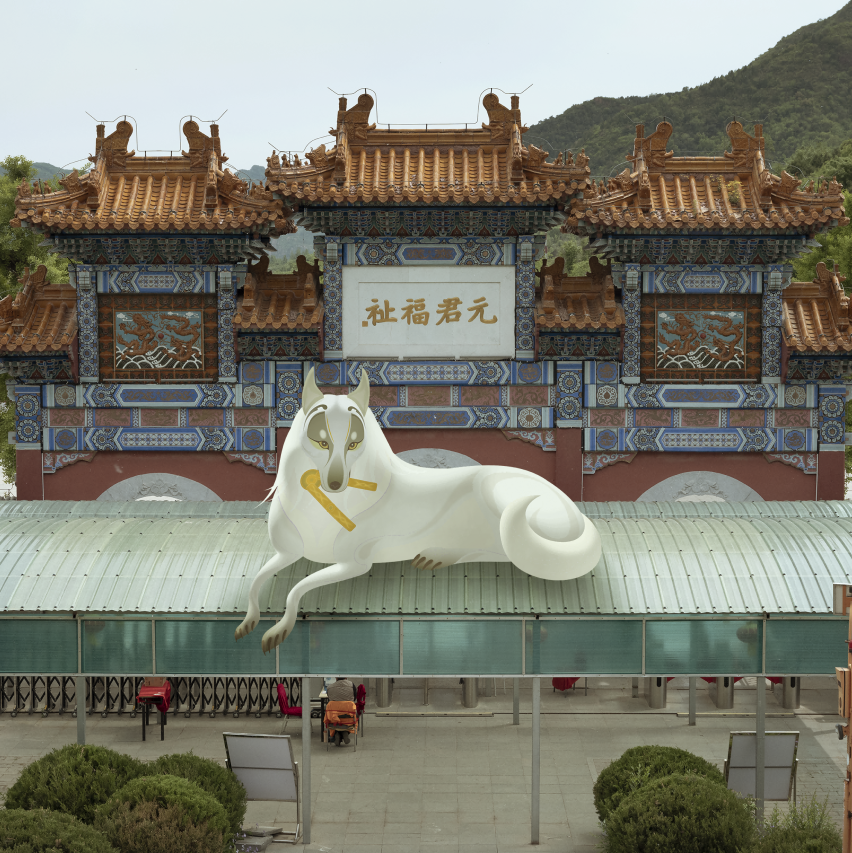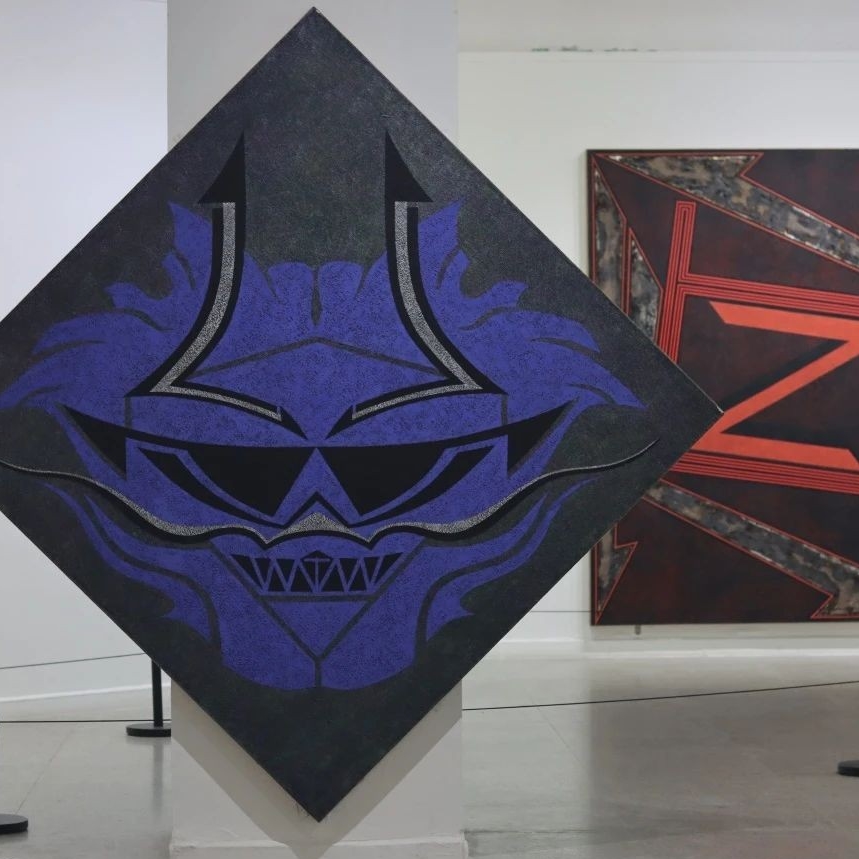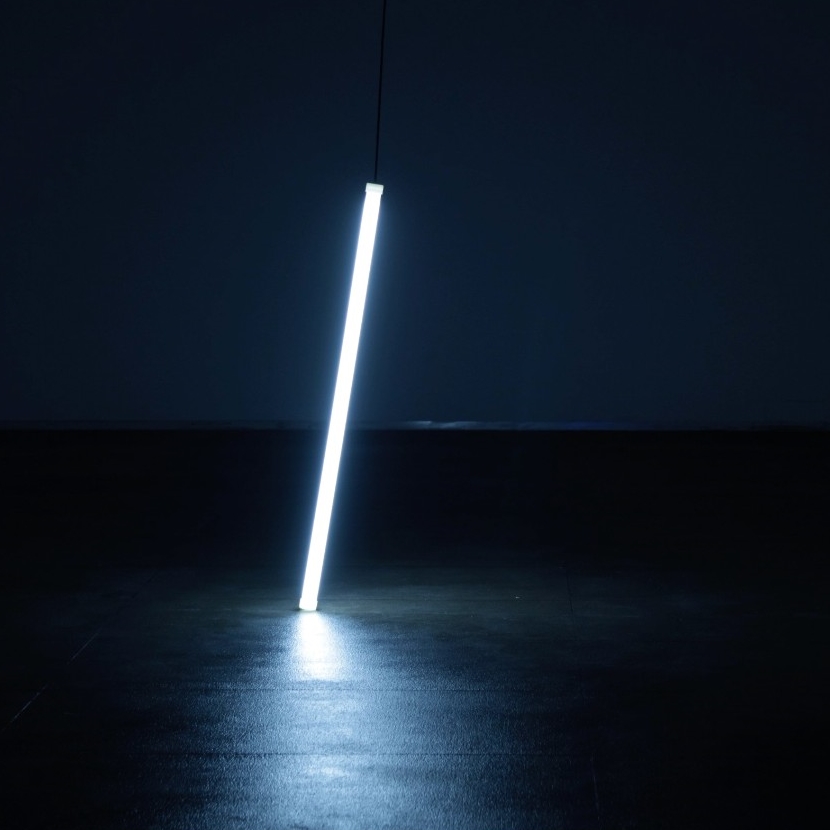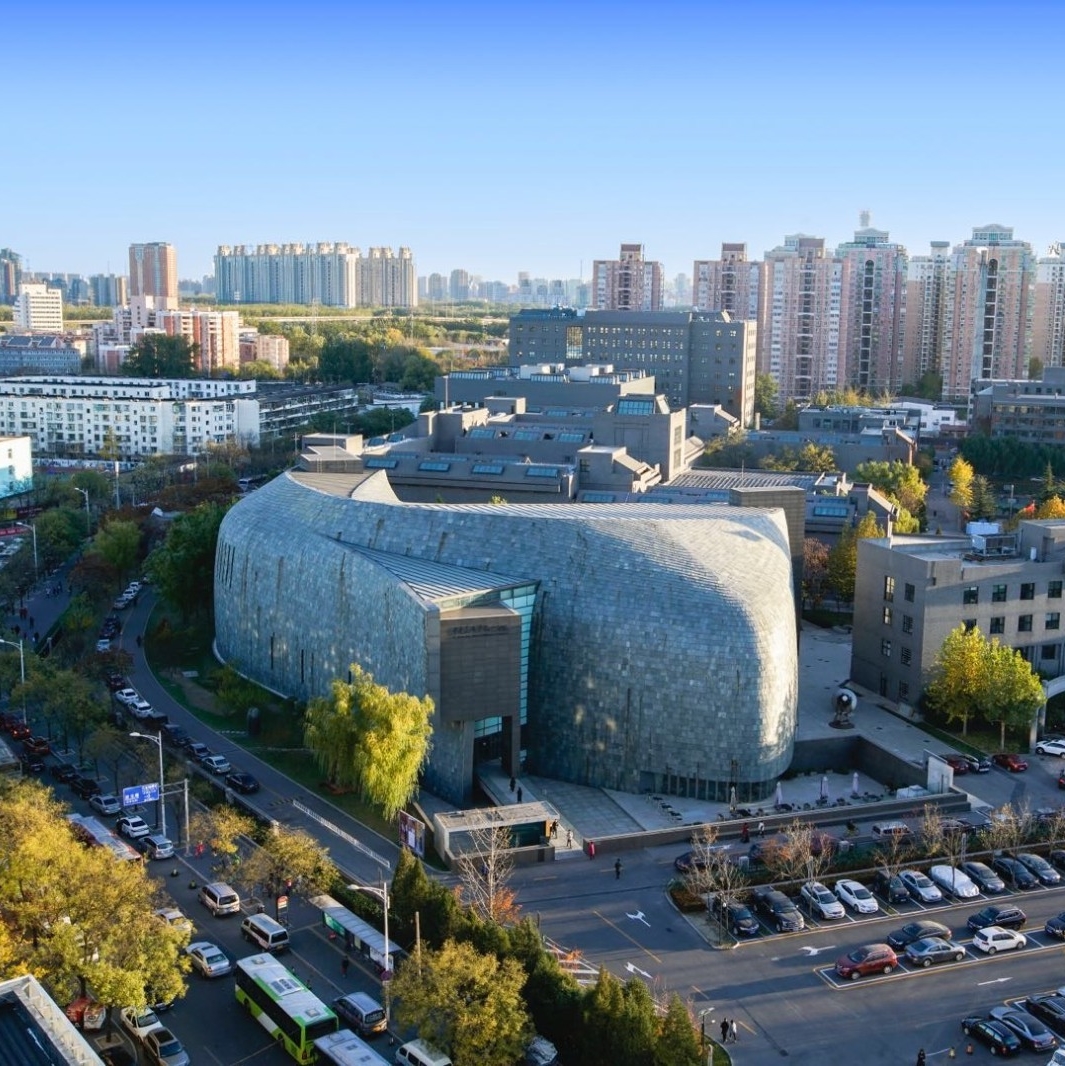 Exhibition View of “Meng Luding: The Ultimate in Vision”
Exhibition View of “Meng Luding: The Ultimate in Vision”
On April 6, 2024, “Meng Luding: The Ultimate in Vision” was unveiled at the Chengdu Art Museum. Being the first large-scale solo exhibition of Meng Luding in Chengdu with the “Cinnabar” series as the clue, the exhibition showcases ten pieces (sets) of installation works and paintings. Among them, in the 15-meter-high gallery, what has drawn most attention is “Cinnabar: Sacrifice”, a site-specific installation that Meng has forged according to the spacial feature of Chengdu Art Museum. Constituted by 24 cowhide, the work is 13 meters high and 6 meters wide, and it becomes a highlight of the exhibition.
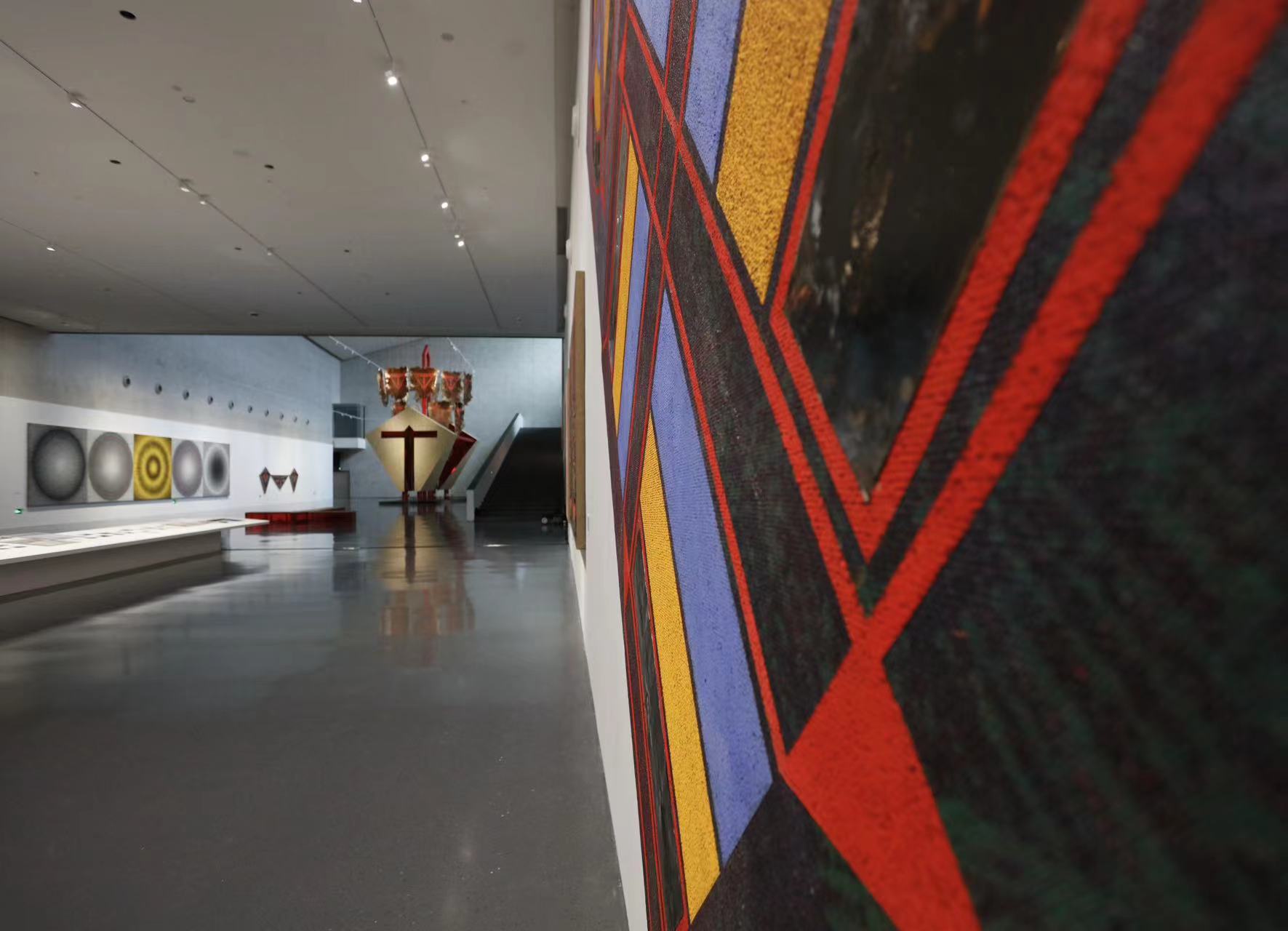 Exhibition View of “Meng Luding The Ultimate in Vision”
Exhibition View of “Meng Luding The Ultimate in Vision”
Just as Feng Boyi who serves as curator for the exhibition, commented in his essay, generally from Meng’s surrealist work “In the New Age—The Enlightenment of Adam and Eve” (1985), to the “Red Wall” and “Football” series that he explored the style of expressionism in 1987 when he just graduated from the Central Academy of Fine Arts, to the “Primary State” series that he transcends from representational style to abstract expression, and later he supplemented the mechanical “strength” in his work by exploring subject of “Yuan Rate” series. In recent years, he has taken his material exploration as the lead, while deepening and achieving new progress in his “Cinnabar” series. It can be said that Meng Luding’s creative context has developed layer by layer to “purified visual language.” His artistic context is clear and distinguished, while the core of his expression at different stages has always been related to the his individual perception, feedback and thinking on the world.
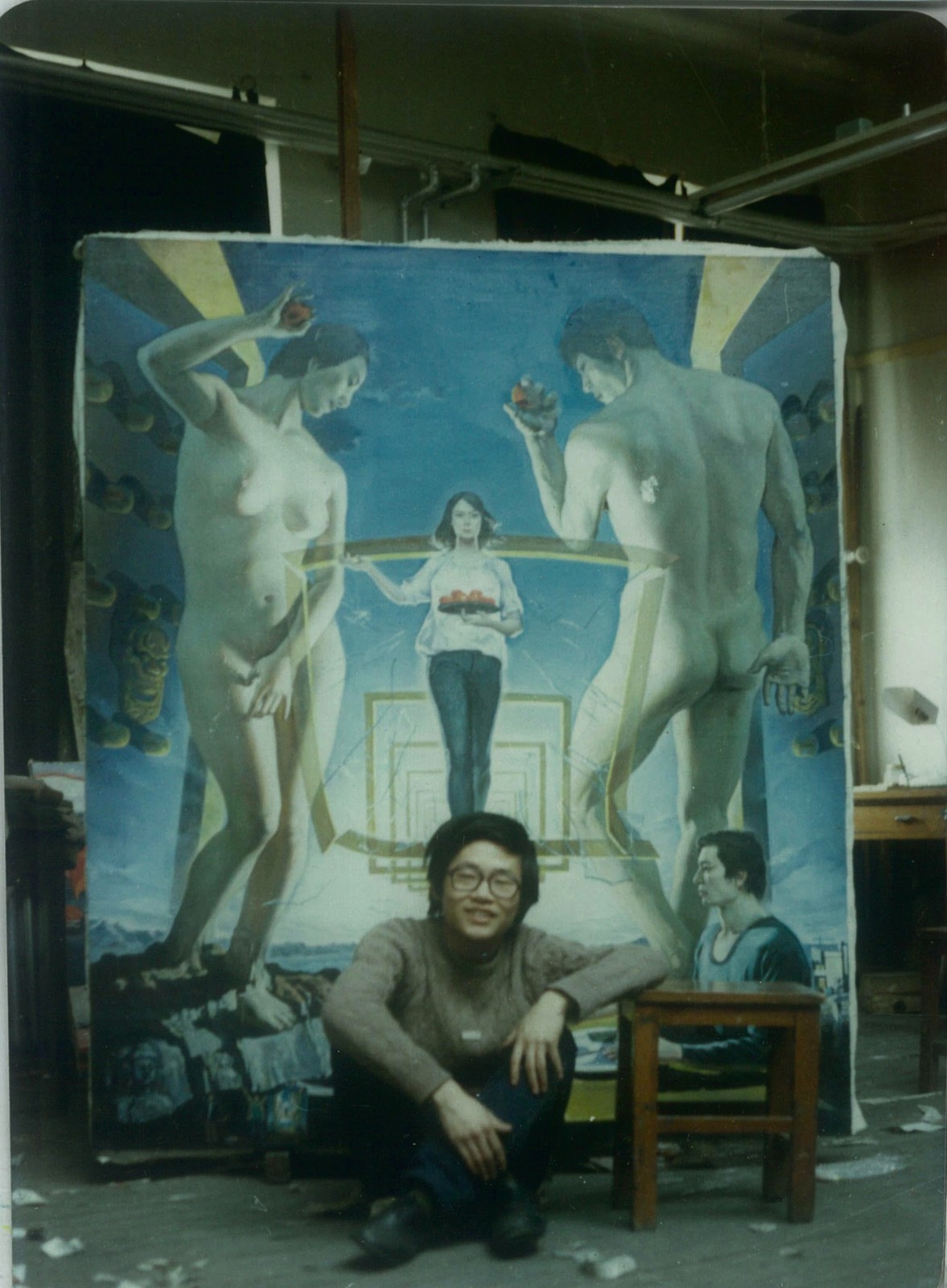 The creative process of “In the New Age—The Enlightenment of Adam and Eve”, CAFA Studio, 1985
The creative process of “In the New Age—The Enlightenment of Adam and Eve”, CAFA Studio, 1985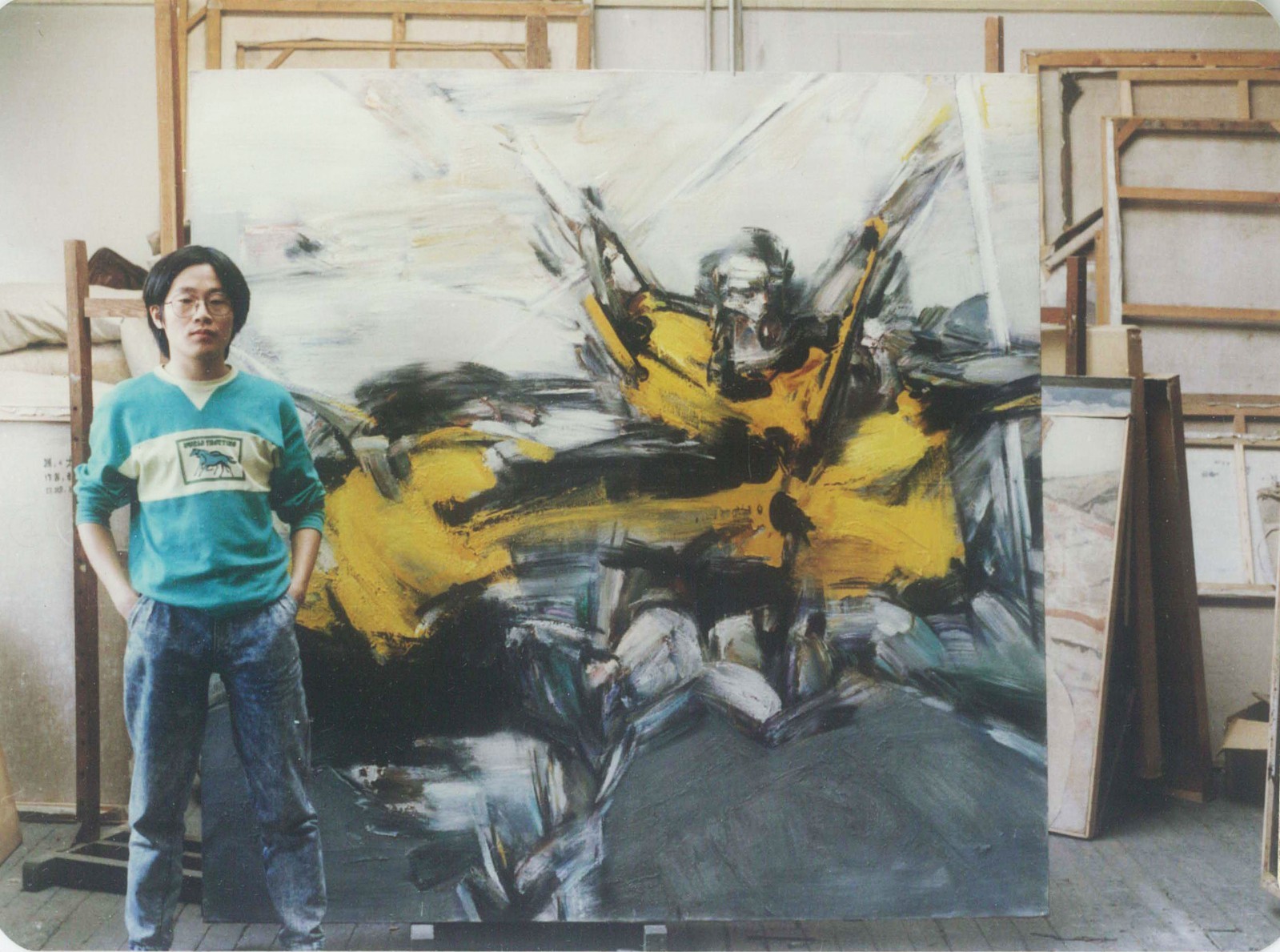 “Football” for the Degree Show, 1987
“Football” for the Degree Show, 1987 “The Process of Purification” was published on Fine Arts in China in 1988.
“The Process of Purification” was published on Fine Arts in China in 1988.
Portrait of Meng Luding
Meng Luding is an important representative artist of contemporary Chinese abstract art. Born in Baoding, Hebei Province in 1962, he graduated from the Department of Oil Painting at the Central Academy of Fine Arts (abbr. CAFA) in 1987 and has stayed at CAFA to teach. He is currently a professor and doctoral supervisor in the Department of Oil Painting at the Central Academy of Fine Arts, and a distinguished doctoral supervisor at the Beijing Film Academy. Currently he lives and works in Beijing.




 Exhibition View of “Meng Luding: The Ultimate in Vision”
Exhibition View of “Meng Luding: The Ultimate in Vision”
Q: First of all, please talk about the origin of this exhibition. The “Ultimate in Vision” seems to convey a certain feeling about the future. From the theme of the exhibition, the selection of works and the final visual presentation of the exhibition, what kind of feeling do you hope to convey to the public?
Meng Luding: As a new project in Chengdu, the Chengdu Art Museum has hosted two Chengdu Biennales. In addition, it has also held a series of solo exhibitions. My solo exhibition was originally scheduled to be held in December 2023, but due to the busy schedule of Biennale and so on, my show was postponed to spring of 2024. I think Chengdu, with flowers blooming in warm spring, is also very suitable for holding this exhibition.
I invited my old friend Feng Boyi to curate this exhibition. We have known each other since the 1980s, but this is our first collaboration. He has extensive experience in curating, and we are very consistent in our curatorial concepts and academic attitudes. We also had several in-depth discussions on the theme of the exhibition, and finally chose “the Ultimate in Vision” that can reflect the ultimate purpose and far vision. Taking into account the particularity of the exhibition space, a large space of nearly 2,000 square meters, we planed to display several sets of works to create an open visual effect. My works, especially a few series and large-scale paintings, can fill such a large gallery.
The theme of the exhibition is closely related to the content and layout of my works, reflecting a profound response to reality, including my tribute to life and expectations for the future. I hope that my work can impress the body and mind of audience and make them resonate visually. This exhibition is also a continuation of my work in recent years. I hope that this exhibition can become a historical review of the past few years and allow people to still have profound thoughts when they retrospect in the future.
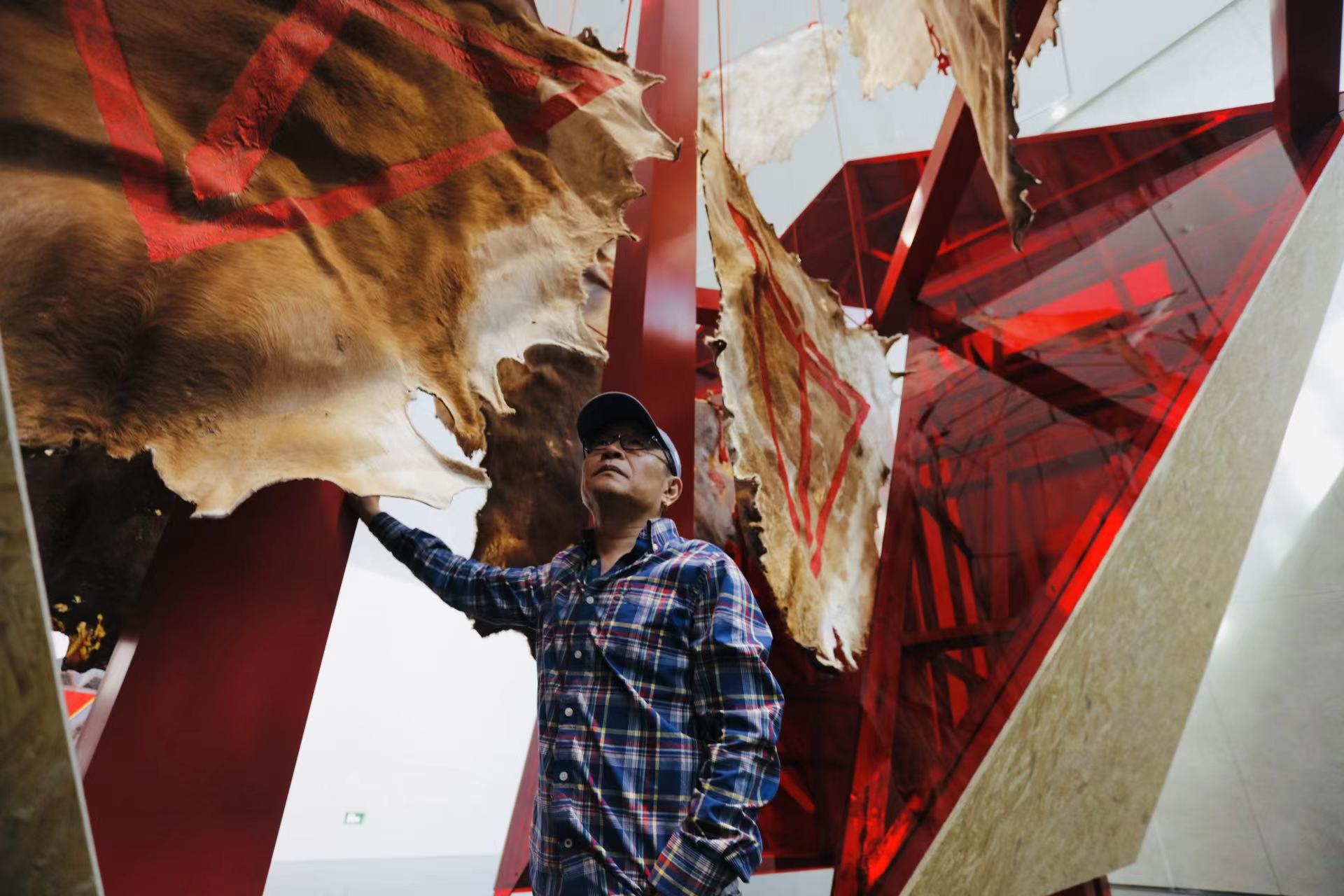 Meng Luding with the Installation View
Meng Luding with the Installation View
Q: While observing this solo exhibition, it seems that the volume and materials of your works have changed. For example, the number of mixed media and the size of installation works have increased. What are your considerations over the changes in creation?
Meng Luding: I used to create many large-scale works, especially in the “Yuan Rate” series. Since the exhibition space is broader, I have specially prepared larger-sized works for this purpose over the past few years.
I plan to hold a solo exhibition at the Hubei Art Museum at the end of 2024. Although the height is limited, the exhibition space will be larger, about 3,000 square meters, divided into three exhibition halls. Therefore, in my solo exhibition to be held at Hubei Art Museum, we will place more emphasis on the visual presentation of the overall space. The curatorial plan proposed by curator Cui Cancan is also very suitable for a large gallery. By creating several relatively complete small units, my creative thread can be displayed in a more comprehensive way.
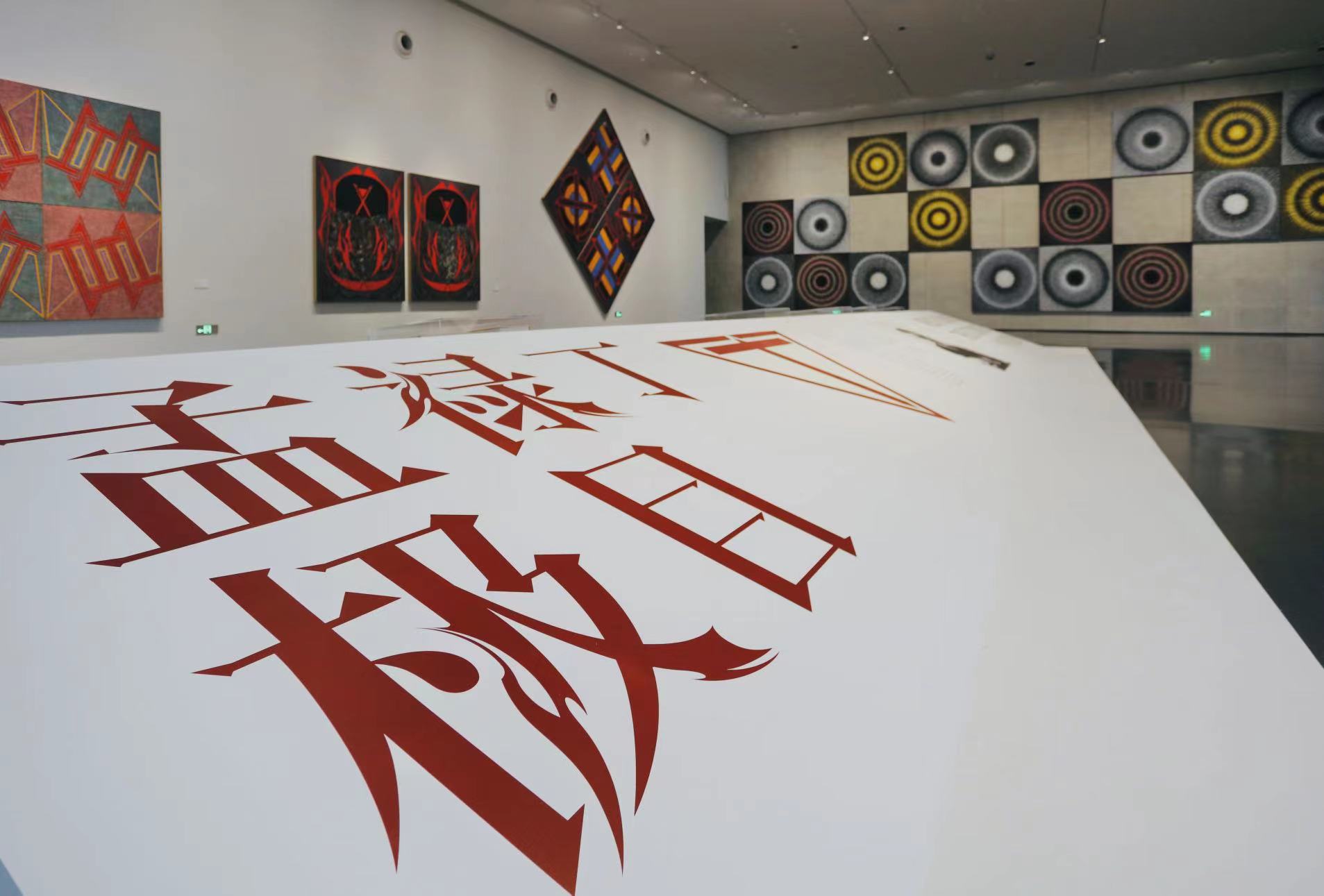
Exhibition View of “Meng Luding: The Ultimate in Vision”
Q: The “Cinnabar” series continues your creative thread. How has this series experienced and what stage is it currently at?
Meng Luding: Earlier I expanded the “Cinnabar” series and added realgar elements. By 2022, I have held four solo exhibitions and once again introduced new experiments. For “Yuan Color” exhibition displayed at Chun Art Museum in Shanghai in July 2022, I chose blue, one of the three primary colors, to explore the essence and purity of colors. These experiments convey my return to the basic elements of colors.
Cinnabar and realgar have been recurring elements in my work. This time I added new changes to my exhibition in Chengdu, introducing mixed media, especially the use of fire techniques. I burn the tinfoil and let the traces left on the tinfoil become a part of the work. I have already exhibited a similar work at the Chengdu Biennale in 2023. This solo exhibition presents four or five sets of works using fire techniques, and I hope to show everyone the new experimental nature of my works.
 Faces, 400×250cm, Mineral pigments on canvas, 2023
Faces, 400×250cm, Mineral pigments on canvas, 2023
Although I have used traditional materials, they are also closely related to real life in terms of culture and practical functions. I also attach great importance to the symbolic meaning of cinnabar. Fire and cinnabar are closely connected. Under a high temperature of 300 degrees, cinnabar will change. Fire symbolizes energy and freedom. I hope people can combine cinnabar and fire, experiencing the concept through visual sensation.
Q: There are mysterious atmosphere and the aura in your work. In a previous interview, you mentioned that the theme “Memorial and Response to Life” seems to be related to the environment of Chengdu?
Meng Luding: In the past two or three years, everyone in the world has actually experienced tremendous changes. I also use some symbols in my works to convey my attitude and world view. My understanding of the current world is all contained in my visual symbols.
The works on display this time contain biological materials such as cowhide. I think life is a very realistic problem confronted by mankind today. We are all facing death, anticipation of the unknown, perhaps confusion and more complex emotions. Therefore, in terms of the overall layout of the exhibition and the production of each work, whether it is the selection of materials, visual symbols or color application, my works are connected with the real world, and they are all trying to express this profound connection.
 Cinnabar, 290×290cm, Mineral pigments on canvas, 2023
Cinnabar, 290×290cm, Mineral pigments on canvas, 2023
Q: What other symbols are used in your works for this exhibition?
Meng Luding: My works also include fire patterns on two masks. This is because there are firing elements in the works. In fact, I have been using this concept of fire patterns in the “Realgar” series since 2021. Also includes “Ding”, which is not only a word in my name, I also feel that it can bring a kind of calm power, but also contains elements of individualistic feature and personal will.
 Cinnabar, 160×173cm, Mineral pigments on canvas, 2023
Cinnabar, 160×173cm, Mineral pigments on canvas, 2023
Q: When you talked about the issue of “Tradition and Future,” you said, “How to transform this worldview and way of viewing into contemporary ways and languages is something that we modern people need to think about and explore.” What impact does this transformation have on you? What kind of different stages and personal experiences did you go through?
Meng Luding: I received Chinese education since I was a child, and then I also lived in the West, and later I returned to China. Personally, I don’t try too hard to distinguish Chinese and Western worldviews, because I find this distinction very difficult, so I don’t specifically emphasize whether what I have is traditional elements or Western elements.
Judging from my educational experience starting from the High School Affiliated to the Central Academy of Fine Arts, I paid more attention to Western modernism. When thinking about problems, I tend to emphasize personal independence. I believe that if a person has a correct worldview and values, there is no need to overemphasize nationality or regional characteristics. We should think about art and even society itself based on real feelings and cognition. This is the right direction. Therefore, I don’t pay much attention to other discussions on these issues, and I don’t deliberately think about them myself, let alone flaunt them, which can easily deviate from the essence of the issue.
 Meng Luding, “Football” sketch, 1987
Meng Luding, “Football” sketch, 1987
 Creature, 90×130cm, Oil on canvas, 1987
Creature, 90×130cm, Oil on canvas, 1987
Q: The mechanical and futuristic sense in your past works also extends to the “Cinnabar” series, and it creates a certain collision with traditional elements. Is this tension also a part of the artistic expression you seek?
Meng Luding: I think this is a very natural choice. So-called traditional materials, such as cinnabar or realgar, are also used in the West. In fact, if we look at it from another perspective, oil paintings and canvas are also traditional materials. For us modern people, we no longer have many media boundaries. As an artist, what is more important is how to express thoughts and ideas. The content of one’s expression determines whatever materials an artist can use.
For example, I started using traditional materials in the 1980s. In the 1988 “You Hua Ren Ti Yi Shu Da Zhan”(A Grand Oil Painting Exhibition Featuring Nude Art), my works combined rice paper, ink and oil painting. Personally I don’t think there is anything special about using these materials. If some material can express what I want to say, or provide a fresh way of expression, I will use it, even including machinery. Therefore, these materials do not have any special meaning to me, they just serve my expression.
 Cinnabar—Realgar—Azurite, 400×400cm, Mineral pigments on canvas, 2023
Cinnabar—Realgar—Azurite, 400×400cm, Mineral pigments on canvas, 2023
Q: You have mentioned some interesting and vivid feelings about mineral materials such as cinnabar in previous interviews. Do you have any new understanding of these materials now?
Meng Luding: I think my feelings now may be deeper, broader, and more profound than before. I see, hear, feel and think about many strange and vivid things, and I am also sensitive to the irrationality of the world around me.
This feeling allows me to obtain more information continuously, which is not only about our tradition or some stories I tell, but about the events and challenges we face as a whole society. There were a lot of things that impressed me and prompted me to use these materials. Through these materials, I can generate a higher-dimensional visual or psychological symbolic association, so I continue to apply these materials. In the past two years, I think this is very realistic and it keeps relevant to the present.
Q: How do you think abstract art has received increasing attention in recent years?
Meng Luding: Nowadays, more young abstract artists are emerging. The public, collectors and art practitioners are paying more attention to abstract art, and the forms of creation are therefore more diverse. This is definitely a good phenomenon. Abstract art is an international language and an important practical achievement of modernism over the past century. In recent years, with the development of contemporary art in China, the understanding of abstract art in the public eyes has gradually moved away from the past formalism, aestheticism, and even the understanding of being divorced from society and being highbrow. Of course, abstraction does include the above factors. In recent years, the general understanding of abstract art has become more reasonable and realistic.
Abstraction can exist as long as it is abstract and has a certain abstract aesthetic. It also includes currently popular abstract art, such as the abstract language used in trend art, but more importantly, abstraction is the result of modernism, it is a social product, and the latter may be the core driving force for the advancement of abstract art. From tradition to expressionism and later to minimalism, the expression of abstract art has been changing and following the trends of Western social culture and social art movements. Social changes have continuously promoted the development of abstract language. It is conceivable that as society develops and people gradually gain a deeper understanding of art, Chinese abstract art will definitely become more important.
Abstract art has a lot of room for future development, but this does not only refer to abstraction in a narrow sense, because another major feature of abstract art is that it can derive various styles, forms and schools, so what I am referring to is some essential attributes of abstraction: it is real, independent and free.
 Primary State, 120×140cm, Mixed media, 1988
Primary State, 120×140cm, Mixed media, 1988
Q: How do your works included in the exhibition show your response and thinking about the current world as an individual?
Meng Luding: In terms of my personal creative stages, from the 1980s to recent years, I have experimented with various materials, languages and forms. But in recent years, I have become more motivated to create because I feel that the world is facing changes and signs of change have already begun.
Before holding the solo exhibition “Yuan” at the Minsheng Art Museum in 2019, I had not hold a solo exhibition for nearly 10 years. From 2021 to 2024, I had 4 solo exhibitions, especially 2 large-scale solo exhibitions this year. I think it is the current social culture and the overall world situation that bring energy to me to continue to promote creation and make me more motivated, because I realize that we are facing an unprecedented epoch that is worthy. Therefore, whether these exhibitions are successful or not, as long as I take them seriously and truly invest my energy and thinking, it is enough.
 Yuan Rate, 1800×600cm, series of paintings, 2013
Yuan Rate, 1800×600cm, series of paintings, 2013
Q: Do you believe that your thinking about the future and a more historical perspective come from the unique sense of responsibility belongs to the artists of your generation?
Meng Luding: The sense of responsibility is reflected in each person and expressed in different ways. But I think the artistic creations of those born in the 1960s do have a broad sense of responsibility. Of course, it is often questioned as “meaningless”. As I expressed in my article “Absurdity and Experience” in the 1980s, individuals may have already seen the absurdity and meaninglessness of culture itself. But nihilism is more or less one of the many understandings that people have about the world and art. It is meaningful for artists to do this. The meaninglessness of the work and the meaningfulness of the creative act are like a paradox, which of course also contains some kind of inertia. As far as our generation is concerned, a certain motivation drives us to express our perceptions, questions and responses to the world through individual vision and through art. In my opinion, this may naturally include a certain sense of responsibility. Of course, maybe the younger generation will feel this sense of responsibility is suspected of “flattering oneself”, but I think justice still exists in the world. If everyone does not believe it, the world will lose its momentum and become a mess.
Text (CN) by Mengxi and Jia Qianfan, edited (EN) by Sue/CAFA ART INFO
Image Courtesy of the Artist and Chengdu Art Museum
About the Exhibition
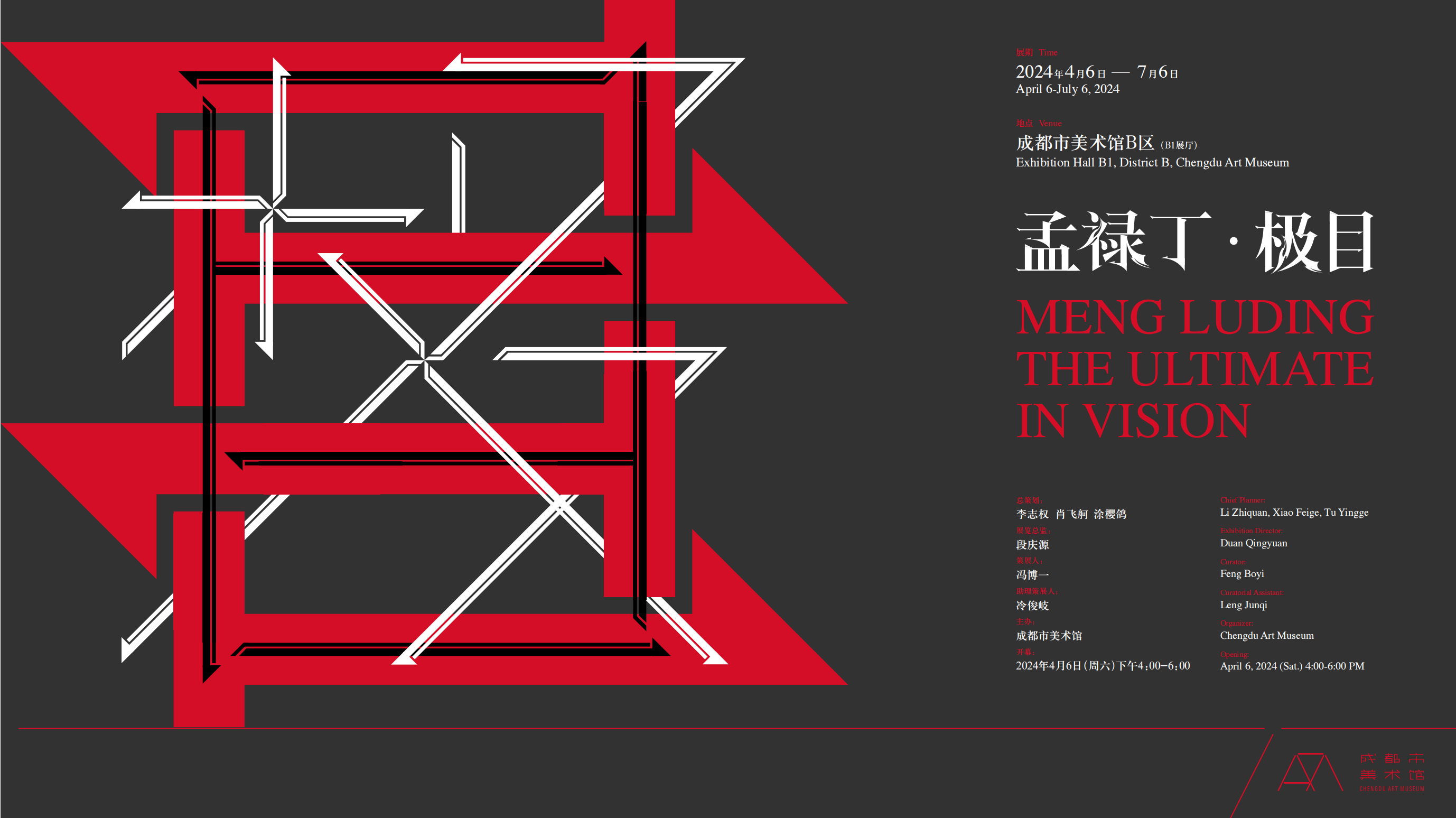
Duration: April 6 – July 6
Venue: Gallery B1, B District of Chengdu Art Museum


